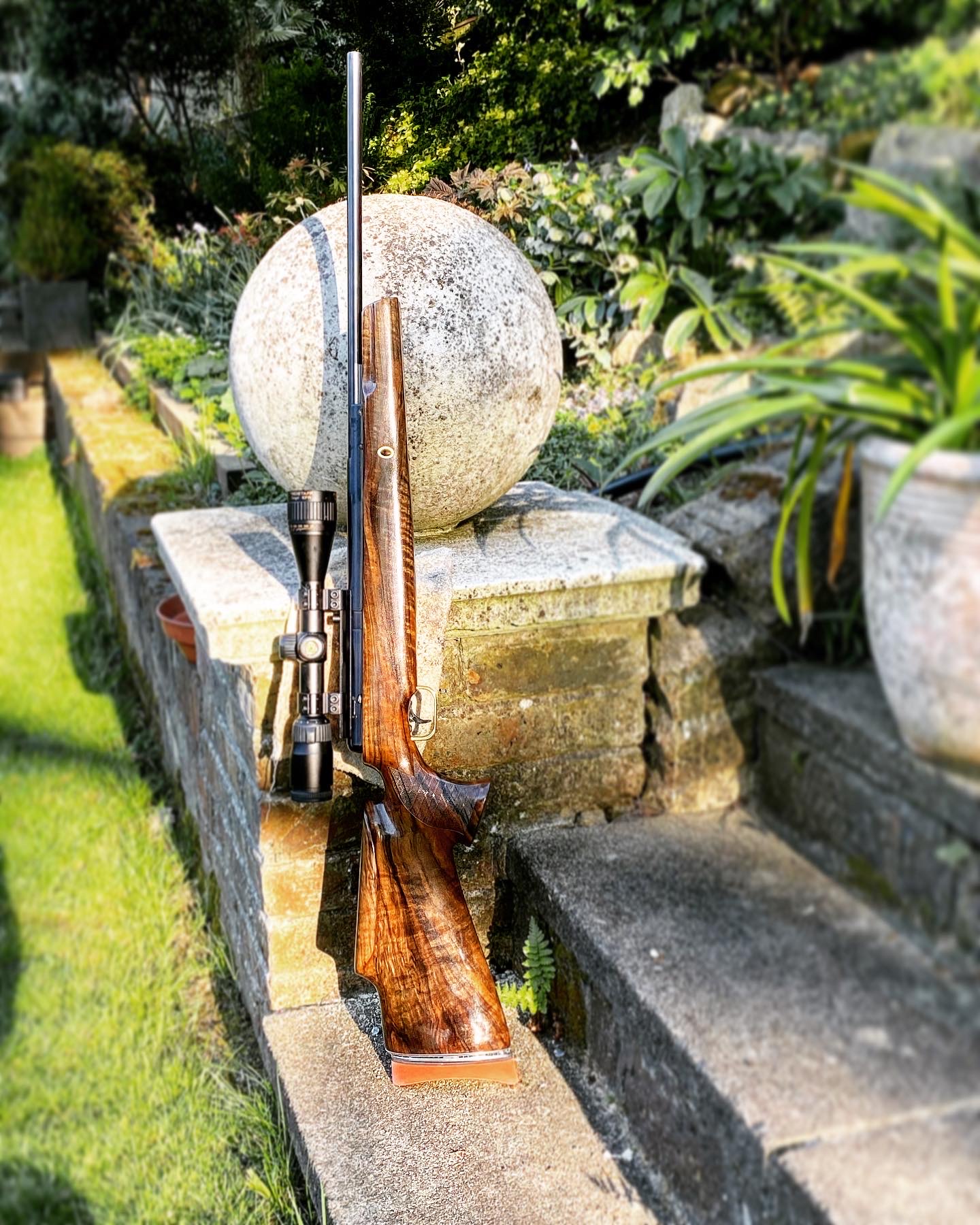BSA Spitfire .22
In 1999, John Bowkett came up with the Spitfire design. It looked just like a break-barrel air rifle, but it was a pre-charged pneumatic.
The barrel swings down 30 degrees from the horizontal and it loads just like a traditional break-barrel. The barrel is sealed with an ‘O’ ring. The first Spitfires were what BSA called SF or Standard Fill models. The gun will give 50 shots in .22. The air pressure indicator is positioned on the scope rail. This steel cylinder has a black bar marked in thin white lines that rise as the gun is filled. If you can see four white lines, it’s full; down to one and it’s nearly empty.
It is very light, pointable and accurate. All the benefits of a break-barrel air rifle, but with the recoilless advantages of a PCP.
This gun was ‘blue printed by John Bowkett. And the stock is a magnificent Turkish Walnut blank crafted by Warren Edwards. With custom brass forend stock screw inserts, brass guard and the signature brass signet disc in the foot of the pistol grip.
The barrel swings down 30 degrees from the horizontal and it loads just like a traditional break-barrel. The barrel is sealed with an ‘O’ ring. The first Spitfires were what BSA called SF or Standard Fill models. The gun will give 50 shots in .22. The air pressure indicator is positioned on the scope rail. This steel cylinder has a black bar marked in thin white lines that rise as the gun is filled. If you can see four white lines, it’s full; down to one and it’s nearly empty.
It is very light, pointable and accurate. All the benefits of a break-barrel air rifle, but with the recoilless advantages of a PCP.
This gun was ‘blue printed by John Bowkett. And the stock is a magnificent Turkish Walnut blank crafted by Warren Edwards. With custom brass forend stock screw inserts, brass guard and the signature brass signet disc in the foot of the pistol grip.
